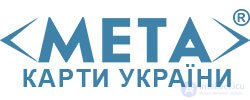Lecture
Popular geo-information services offer, besides viewing maps, searching for objects, laying routes and many social functions. Each of the popular systems has its strengths and weaknesses, due to the specialization or history of development.

Google Maps is the most advanced and functional mapping system on the Internet. True, this is felt only on a global scale, whereas in local services these cards are often inferior to their closest competitors. Google Maps covers the entire globe at once, but their detailing differs from region to region.
In addition to the standard terrain map and sufficiently detailed satellite images, the map has a three-dimensional display of the globe. For a virtual globe, you can install the Google Earth application or install a browser plugin.
The Google map service supports panoramic viewing of the streets of Ukrainian cities. The Street View mode allows you to carefully examine individual sections of streets and houses. The study of street panoramas can be combined with navigation on a regular map, as well as viewing user photos (Panoramio) and video recordings (YouTube) geographically related to location on the map.
In the information layers of the map, you can display objects that are described on Wikipedia, webcams are available, as well as territorially linked message of the social network Buzz. As a separate layer replaces the map, you can display the landscape of the area.
The maps are well implemented function laying routes. Since Google’s map is global, it’s possible to create a route not only within a single locality, but also between different cities and even different countries. If necessary, the route can be laid through more than two points. The cartographic service is able to create a route both for traveling by car and for walking on foot or traveling by public transport.
If necessary, the system calculates several alternative routes and for each of them a step-by-step guide on the route is written. Also, the map service gives the length of the route and the estimated time of its passage.
You can also create and edit your own maps manually. For example, add text labels and objects with comments to the map, draw lines and some other geometric shapes. You can invite collaborators to create your own map, and publish the results of the work in open or limited access.

Maps from the Internet service Yandex became available to Ukrainian users among the first and to this day remain one of the most popular map services. Maps cover 36 Ukrainian cities, only major roads and settlements are marked on the map of the country.
City maps and satellite photographs have very high detail. The user can view the scheme or photo separately, and also combine layers into a hybrid map. The names on the maps are written in Russian, but the service easily searches for the names of the Ukrainian objects. The map is "informed" about the facts of renaming streets and allows you to find objects by both the old and the new name.
In addition to maps and satellite images of cities, the maps have several additional information layers. Among the useful ones are the location of car service stations, car washes, gas stations, as well as specialized and higher educational institutions. The maps provide a catalog of organizations and institutions of a single city.
Yandex.Probki is a useful service that in real time shows on the map the congestion of all transport arteries of the city.
Work "traffic jams" thanks to the active participation of the people. A driver with a GPS device with Internet access can take part in the preparation of an actual map of urban traffic jams. Depending on the average speed of the vehicle, the information goes to the Yandex server, the system draws colored lines along the route. Green - the road is free, yellow - rather filled, red - traffic jam.
A useful service for drivers is a map solution that will help to understand the complex schemes of overpasses and overpasses.
Street Panorama provides a street view service for major cities in Ukraine. A ruler for measuring distances and tags with comments are available.

Unlike previous online services, the Goal service is a domestic product. Since the first map appeared in test mode (it was a map of Kiev) in 2007, the portal expanded coverage to 28 cities in different regions of Ukraine, and this is not only regional centers. In fact, only five regions have remained uncovered now - Vinnytsia, Transcarpathian, Kirovograd, Khmelnitsky and Chernivtsi. For them, there are only general maps of the region with scaling up to 1 km.
In the cities for which the Goals maps are available, the minimum scale is 100 m. Map navigation is quite convenient and typical for most of these services: the map is dragged with the mouse cursor, double clicking marks the zoom, an additional navigation panel is located in the upper part of the browser window . Street names are in Russian, the search is conducted on it. When you specify a specific address on the general map dandruff appears, which increases the area.
In addition to homes and highways, detailed city maps on the “Objectives” allow you to display various institutions. All objects are sorted into categories: Transport, Education, Medicine, Government agencies, Wi-Fi access points, as well as traffic police cameras. For different cities, the sets of such objects are different.
By registering on the service, you can add your own objects, which will be marked as tags on the map with user comments. Clicking on any item in the My objects list will quickly jump to the selected object. This feature is very convenient for frequent work with maps, for example, when drawing up excursion routes.
It is possible to draw a route between different points on the map. In the maps from the “Target”, the route can be drawn up on an unlimited number of points, but the route between two neighboring points is laid not along automobile highways, but straight, despite houses and other obstacles.

Ukrainian service - Mapia positions itself not so much as a map service, but rather as a catalog of companies. In terms of coverage, this resource is clearly inferior to competitors (there are maps of only 12 major cities in Ukraine), but the quality of the implementation of the cards is high. On the main page of the site there is a form for searching companies by name or address (it can also be used for searching streets and addresses). In addition, there is a large list of categories of various institutions, as well as a list of companies recently added.
When you go to the city maps themselves, a list of objects is also displayed - for each category there is a tab in the upper part of the window in the panel on the left that shows the types of organizations sought (for example, for the Finance category these are Banks, ATMs, Credit organizations, etc.). of these, all the organizations included in the catalog are shown on the map instantly. When you hover the mouse over the map icon, a prompt appears with brief information about the company, as well as links to go to the full profile of the organization with detailed contact information and a fragment of the map where it is located. If you enter the street name in the search form, then in addition to displaying it on the map of the city, a list of companies located on this street appears.
Well implemented function of laying the route. A route line between adjacent points is built along motorways, and as a result, the total mileage of the route is displayed. If a route point is located in a place where the service has poor coverage (for example, outside the city), it will automatically be transferred to the nearest known “map” point - for example, to the road.
Another interesting service is the API Maria, which allows you to integrate map fragments on other sites. This is convenient, for example, for placing directions on a page of an organization. API is presented in three languages - Ukrainian, Russian and English. You can use a static or dynamic option: in the first case, the location of one object is shown on the map, in the second, you can insert an interactive fragment with the ability to move and change the map scale.
Comments
To leave a comment
Fundamentals of Internet and Web Technologies
Terms: Fundamentals of Internet and Web Technologies